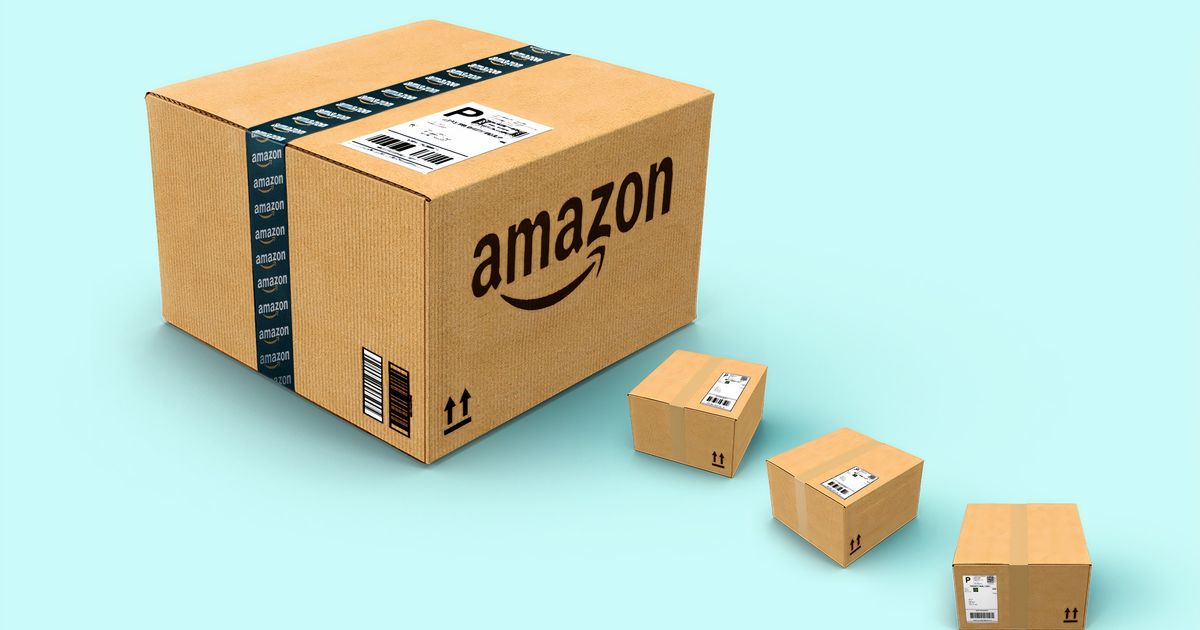
The Covid Case For Full Stack Returns Management
Written by Dalton Fouts, 2020-06-29
The latest forecast from eMarketer paints a grim picture for US retail sales: sliding more than $4.8T this year, overall retail in 2020 is expected to have a larger percentage decline (10.5%) than 2009 (8.2%). The one bright spot, however, is eCommerce. Online orders are still expected to grow 18.0% overall this year, with food and beverage (58.5%) and health and beauty (32.4%) representing the fastest-growing categories. Even apparel and fashion are expected to grow a further 8.6%, as more consumers grow accustomed to shopping from home. While average order values for fashion have declined, conversion rates have risen year-over-year suggesting that consumers continue to purchase — albeit more consciously of cost.
Although COVID has indeed been a boon for online sales, it has also started the countdown on a returns time bomb that is set to explode. While just 8% of all products purchased at brick-and-mortar stores get returned, the return rate jumps to 25% for orders purchased online. Despite a lack of conclusive data since the outbreak of coronavirus, it can be reasonably assumed that that percentage might even creep higher during the pandemic as consumers have fewer options to try on items in person and instead use their own homes as fitting rooms.
A leading reason why accurate returns data has been so hard to acquire is that a growing number of retailers have extended their return policies this year in light of store closures and social distancing concerns. Return management startup Optoro estimates that as many as 1 in 3 people are holding onto 1 or more returns while they await outlets to reopen. “There is going to be a lingering fear of walking into stores,” according to BMO analyst Simeon Siegel. With purchases up, return timelines extended, and store traffic likely down until there is a vaccine, retailers can expect returns to cause serious operational and financial damage if preemptive measures are not put in place to staunch their impact.
The Amazon Effect
Like most retail trends over the past two decades, the push for customer-centric returns has been led largely by Amazon. Following its purchase of Zappos in 2009, the ecommerce giant also absorbed many of the same principles as the online shoe seller, famous for its generous return policy. Pointedly, Bezos has recognized that returns are not just a key factor in customer loyalty (74% of consumers are likely to switch retailers due to poor returns management) but also an acquisition tool. Indeed, 66% of shoppers check return policies before completing their purchase. Although costly in the short term, free returns actually encourage more consumers to try purchasing from Amazon risk-free while also increasing the lifetime value of each customer.
At the same time that Amazon has built out its fulfillment and distribution network, raising customer expectations for forward leg delivery speed, the retailer has also invested heavily in its own returns infrastructure to make sending back its goods as painless as possible. As such, Amazon policies have conditioned buyers to expect not only free returns but also swift reimbursement. Running algorithms on the backend to determine how much an item will cost to return, restock, and the likelihood of resale; Amazon can identify when an item would actually be more costly to return and instead gift it to the customer for free while recording the return request within their customer profile to identify and prevent potential cases of fraud.
Furthermore, the retail giant, in recognizing the preference of some consumers to make returns in-store, has also partnered with brick-and-mortar outlets like Kohl’s to serve as in-person return centers. Both parties benefit as Amazon drives down the first mile costs of having to complete pickups from multiple residential locations. Meanwhile, the physical retailer receives additional foot traffic with a high chance of conversion.
Opportunities In Reverse Logistics
The value add provided by Amazon can thus be summarized as:
- Providing a seamless and free return experience
- Enabling fast reimbursement with built-in fraud prevention
- Offering sophisticated recommerce logic that ensures returned items are directed to the most profitable end destination
Let's examine how these solutions improve both the customer and retailer experience.
The Consumer
Pain Points
Perhaps obvious but worth pointing out: the returns experience is one of the most sensitive touchpoints in the entire customer journey. Buyers are generally dissatisfied, whether rightly or wrongly, due to their fault or others in the value chain. It’s no surprise then that some retailers we have spoken with have revealed that customers dissatisfied with their returns experience constitute the majority of the retailer’s NPS detractors.
Putting ourselves in the shoes of the customer, we see they have two leading concerns: 1) how effortlessly they can repackage and return their item and 2) how quickly they can be reimbursed. Unlike merchants who work from a single address and are available for pickup the entire workday, the average middle-class consumer leaves home before 9AM, goes to work, and runs errands before coming home. They seek optionality and specificity in their return offering. Additionally, the customer is not concerned with all the restocking work that may be left for the retailer after passing off their parcel to a courier or dropping it off at a kiosk. Rather, the customer’s perception of the journey ends when the remittance hits their bank account - whether that happens instantly or weeks after making the request -- once the order hits a returns warehouse, clears QC, and is approved by a finance team. Time from return request to remittance is a critical KPI for customer satisfaction around returns.
Opportunities
With the above in mind, the two critical objectives for any successful return experience are providing more convenient options for return and a faster reimbursement for the items sent back. Amazon caters to convenience by offering multiple channels to return a parcel — whether in person at outlets like Kohl’s or at home by letting customers print out a return airway bill for a courier and having them pick it up from their doorstep. Meanwhile, the eCommerce giant has also helped eliminate the anxiety of waiting for return credit by providing most customers with an instant reimbursement as soon as their return request has been submitted. Having built out extensive customer profiles based on their purchase history, Amazon can effectively underwrite the risk of receiving an empty box from the consumer.
While brands will likely need to seek external partnerships to provide the same level of sophistication for in-store return options and instant return credit, those looking to learn from Amazon can immediately improve their present day operations simply by defining their internal return logic. Keeping track of instances where the cost of returns is higher than the re-sale value of the item itself, brands can follow Amazon’s example of magnanimously crediting customer’s account and still allowing them to keep the order. By prioritizing the customer experience, eCommerce brands thus can begin building towards the most pleasant return process possible short of preventing returns altogether.
The Retailer
Pain Points
For eCommerce retailers such as Amazon, customer satisfaction is paramount. Returns, and their associated costs, are seen as a key pillar in sustaining customer service and maximizing CLV. Meanwhile most other retailers have convinced themselves that they will suffer heavy losses to their bottom line for each item that is sent back. Some of the D2C brands we’ve consulted choose to avoid the cost and complexity of returns all together by making their returns process purposefully Byzantine — requiring emails and/or live conversations with a customer service rep just to trigger a return. What these brands fail to appreciate is that their actions not only damage brand loyalty for existing customers but also deter new ones from making a purchase. The standard set by Amazon for swift returns and reimbursement has become the expectation for many consumers with studies showing up to 70% of online transactions are abandoned with the main reason being unacceptable shipping or returns policies.
Not only does this myopic perspective decrease top-line revenue, but retailers are also incurring additional operational costs by failing to embrace a holistic approach to returns. Without a dedicated returns management system to track orders and provide visibility to all parties, retailers are just as clueless about where a parcel is as customers are about when they will be reimbursed. Customer service teams suffer nagging calls from consumers asking about the status of parcels over which neither party has visibility. Meanwhile warehouse teams, who are likewise blind to these inbound volumes, have limited ability to stage their workflows around returns. When receiving items at the same distribution center where forward leg deliveries get dispatched, it is far too common for warehouse teams to allow these unannounced return orders to build up over the course of a few days (often piled in a corner) before being processed in a single weekly rush of activity.
Indeed, these additional costs to customer service, warehouse time, and shelf space combine as a serious drag on brands’ profitability. And yet, almost none of the retailers we have spoken with include return costs when breaking down profitability on a per customer or per SKU basis; that is in the rare instances where they make these breakdowns at all. Strikingly, we have found that many large D2C brands, despite spending vast sums on marketing campaigns, do not even attempt to calculate the unit economics of each order. This lack of visibility is alarming as the returns process, by some counts, could erode profits as much as 25%. Gary Vaynerchuk, founder and CEO of VaynerMedia, suggests that number might be even higher, “Ninety-eight percent of DTC brands are out of business, they just don’t know it yet… They don’t have the fundamentals to continue to acquire customers at a value that’s right, and the [venture] money will eventually dry out.”
Opportunities
For retailers to match the convenience of the Amazon return journey, they will need a branded return experience that fully engages the customer during the sensitive return period. Having a seamless experience not only alleviates customer frustration but also streamlines internal work orders. From the moment a customer clicks return, the customer service team is informed of the item being sent back. Likewise, the warehouse teams can anticipate their volumes, and accordingly inform labor planning so as not to be overwhelmed. This simple visibility can have a significant impact on reducing mishandled orders.
Additionally, having a dedicated returns portal provides retailers with an opportunity to gain actionable insight at the point a return is being executed. Using Amazon’s logic as a guideline, retailers could waive return fees for any items that arrived in poor condition but charge for return reasons like “I changed my mind.” Were retailers to follow the Amazon example in rigorously examining such data, they would recognize that visibility over per customer profitability would allow them to build customer profiles that would enable return credit and help prevent fraud. Buyers who consistently purchase large batches of items that they ultimately return can be flagged within the system for additional shipping fees. Customers who knowingly purchase an extra item to get above a free shipping threshold and then try to return can be identified and held accountable according to the logic that the retailer sets.
Furthermore, a branded returns portal is also an opportunity to re-engage customers with discounts and special offers that can lead to repurchase opportunities. These click-throughs can become very powerful merchandising data with re-purchase trends informing subsequent cross-sell opportunities. Retailers meanwhile would be empowered to break down profitability on a per SKU basis. In this manner, brands would know the true profitability of each item once return rates are included. Not only will that inform how marketing dollars get spent — ensuring that a retailer only promotes SKUs with solid unit economics — but that information will also help in merchandising negotiations. Equipped with data about return reasons and costs, retailers would be strongly positioned in their follow up negotiations with suppliers to push back on unprofitable sizes, colors, and styles.
Critically, the returns data informs retailers’ visibility over profitability in a positive feedback loop that in turn helps streamline the returns flow. In looking for a holistic returns management solution, brands would be wise to seek a provider that can go end-to-end covering the post-purchase experience from forward leg delivery TMS integrations to a return portal and returns credit capabilities under a single profitability dashboard. A unified back end not only provides clarity to customers and a speedy remittance but also helps to acutely spot fraud, calculate the most cost-effective return method, and underwrite return credit risks.
While Amazon draws increasing skepticism for their impartiality as both a retail platform and logistics provider, they can still undoubtedly be a model for returns logistics. From the COVID-era and beyond, we believe there’s both an exigence and opportunity to provide retailers and customers alike with a seamless full-stack returns solution.


